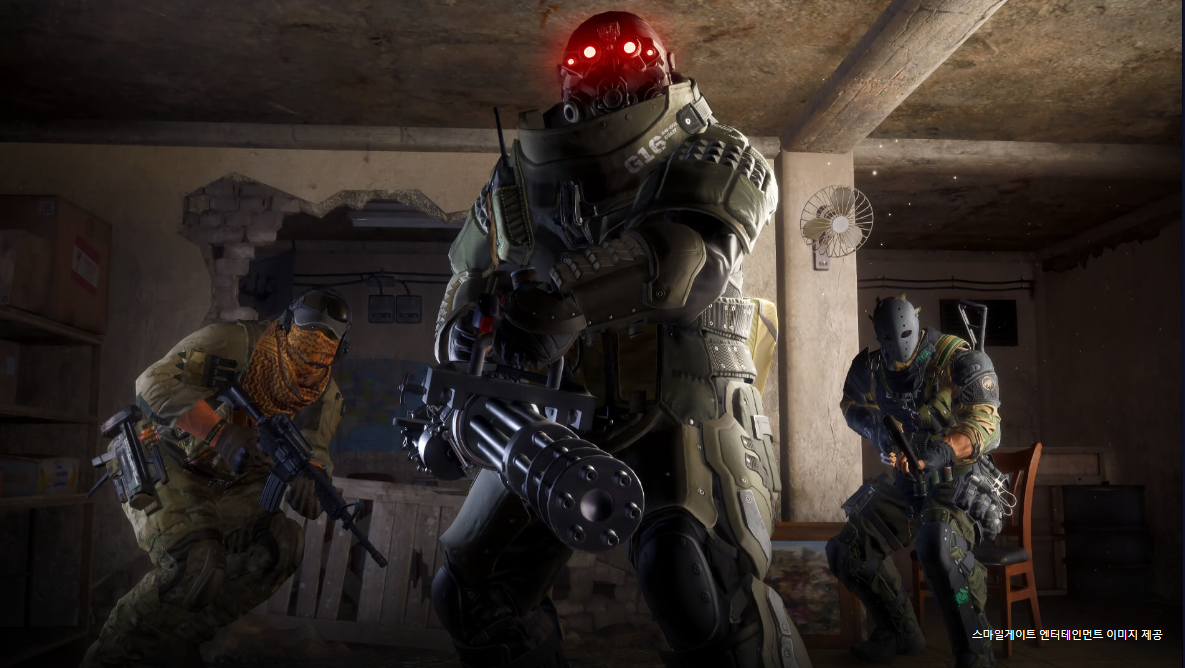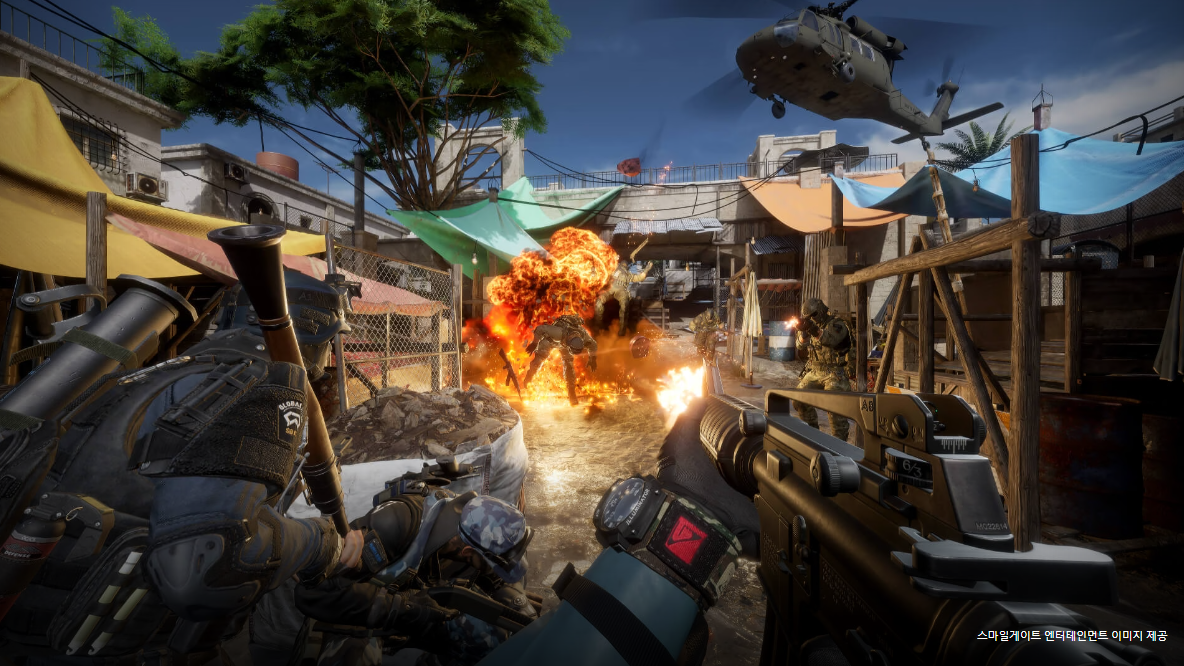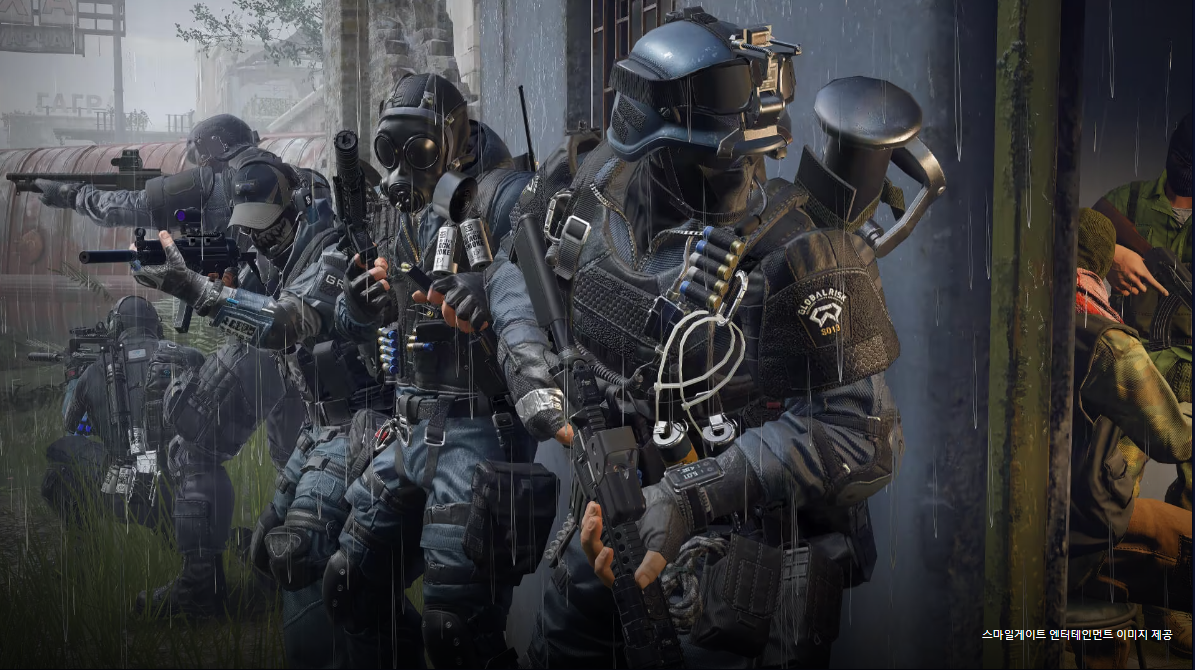※ Source: "CROSSFIRE: Sierra Squad brings the FPS franchise to a new reality" published by Unreal Engine on February 23, 2023
The CROSSFIRE franchise is a beloved free-to-play multiplayer juggernaut in regions throughout the world. Smilegate Entertainment has expanded the tense first-person shooter series from its original PC launch in 2007 to mobile and console releases worldwide. Now the franchise makes the leap to virtual reality on the PlayStation®VR2. with CROSSFIRE: Sierra Squad.
We reached out to Sangkyoon Lee, game director for CROSSFIRE: Sierra Squad, to discuss how the game made the transition to VR, why this entry leans toward single-player and cooperative play, and how an Epic MegaGrant was a driving force in pushing the team forward.
What was the inspiration behind the creation of CROSSFIRE: Sierra Squad?
Kay Sangkyoon Lee, game director for CROSSFIRE: Sierra Squad: During my youth, I was always a fan of immersive arcade games, such as arcade shooters with rifle-shaped controllers. VR is the most immersive gaming device out there, and CFSS is the newest form of an immersive arcade shooter.
What is CROSSFIRE: Sierra Squad about and how does it fit in with the other games in the series?
Lee: In the CROSSFIRE series, many characters and stories are interrelated. The most important theme in the series is the conflict between the two mercenary factions – Global Risk and Black List. Their war is centered around an important technology brought from the future. CFSS is the earliest prequel to this long story, covering a series of outskirt battles. It begins as Global Risk’s Sierra Squad, in charge of maintenance of public order in the Quandat region, runs into some secret information on Black List’s special weapon. It is up to the squad to discover the truth behind it.
The CROSSFIRE franchise was primarily competitive multiplayer in earlier iterations, but CROSSFIRE: Sierra Squad is a single-player/cooperative multiplayer experience. Can you talk about why this was the right choice for the game?
Lee: Our studio goal was to develop a really fun arcade shooter that emphasizes shooting and blowing things up. To realize our vision, we believed PvE was the right choice, and we added a cooperative multiplayer feature so that players may fight together as a squad to accomplish missions with their friends.
Coming into the development of CROSSFIRE: Sierra Squad, what kind of VR experience did the studio have?
Lee: Our VR Studio at Smilegate developed a VR dating experience, Focus On You and a VR action title, Rogan: The Thief in the Castle. They each won a VRCORE award, and Rogan was also an Epic MegaGrants recipient. These two development teams came together to develop CFSS.

Have you learned a lot about VR developing while making CROSSFIRE: Sierra Squad?
Lee: Yes, we’ve learned so much. A couple of quick examples:
On a flat screen, a red dot sight can be implemented by just placing a red dot in the center. In VR, our studio had to actually develop a red dot sight in 360 degree space, which takes into consideration the player’s head position, hand position/angle, etc.
In console FPS games, grenades are generally thrown with fixed power and direction. In VR, they are not always thrown as intended. Our studio took a great deal of time to balance the control detail and difficulty to determine the sweet spot.
How did the team approach storytelling and level design to take into account the potential of VR and cooperative play?
Lee: The most difficult part of VR storytelling was dealing with cutscenes. No matter how much effort we put into them, players might not choose to “look” at the scene. We could have used level design to force players to watch cutscenes, but we focused on gameplay and background mise-en-scène to incorporate the story and less on cutscenes.
CROSSFIRE: Sierra Squad is an arcade shooter, but you've also added a realism mode. How does this change and enhance the experience?
Lee: As an arcade shooter, CFSS gives players some leeway, such as being able to take a few shots and not die. However, in realism mode, players and enemies die much more easily. Features that assist players such as the HUD, remaining bullet count UI, enemy location mark, enemy HP, etc. are not displayed. In contrast to the normal mode where players can absorb multiple shots, in realism mode, they will experience more strategic battles involving covering, searching and carefully engaging. Our goal is to provide a unique experience rather than just a more difficult mode.

Was it challenging adapting the series’ fast paced action in VR?
Lee: CROSSFIRE is unique for its satisfying shooting experience and fast paced action. In VR however, moving quickly causes motion sickness, so we tried to balance moving while maintaining tension while providing a satisfying shooting experience.
Can you explain how the move to VR has changed how the team designs weapons compared to previous CROSSFIRE titles?
Lee: There have been many changes to the design process. As you can see from the example mentioned before about the red dot sight, guns in VR are very different from guns in console shooters where weapons are fixed on a flat screen. In VR, players can lift a rifle or examine its bottom. On a console, players can usually use a button to stabilize shaky hands. In VR, players actually have to hold their breath and minimize their motion for an accurate shot. Another example would be recoil. In VR, players can control recoil by physically moving their weapon in different directions. We’ve spent a great deal of time balancing realism and enjoyability.
Were there any unique considerations the team had to take in developing levels and environments in VR?
Lee: There are so many, but we will provide two examples. One is locating enemies. On a flat screen, enemy and background are not separated, and they display on one flat screen. In VR, due to binocular disparity, an enemy and background are distinct. Players can feel the distance between the enemy and themselves, so finding enemies can become a fun factor in this kind of environment. Players will be able to experience this more in sniper battles.
Another one is optimization. In VR, low frame rate directly contributes to motion sickness and can be immersion breaking, so it’s one of the highest priorities... UE’s automatic [level-of-detail] feature has helped us maintain an appropriate frame rate at all times.
One new VR-only feature in CROSSFIRE: Sierra Squad is the ability to communicate with teammates via real hand signals. Can you explain how the team came up with and implemented this new feature?
Lee: The hand signal mechanic was not actually intended at the start. During an internal test, one of our testers used hand gestures to point at a special weapon placed on the battlefield, and we thought it would be quite meaningful in multiplayer. We anticipate the feature to be used strategically by players as well as casually just saying "hello."

Why was the PlayStation®VR2 the right platform for CROSSFIRE: Sierra Squad?
Lee: PS VR2 is the newest platform that can provide outstanding immersion and experience. We’ve been able to make use of its innovative features like adaptive triggers, haptic feedback, and more to maximize the immersive shooting experience.
How does CROSSFIRE: Sierra Squad make use of the PS VR2's unique features, like enhanced haptic feedback, and adaptive triggers?
Lee: We have a range of 50 weapons in CFSS. Players will be able to feel differences shooting each weapon through adaptive triggers. Each weapon’s trigger pressure will be somewhere between light (e.g. SMGs) and heavy (snipers). When players hold their weapon near their head, headset rumble is activated. For example, when players bring their head near the scope of a weapon for precise shooting, they can feel the rumble similar to what they would feel when actually shooting a gun.
Why was Unreal Engine the right choice for CROSSFIRE: Sierra Squad?
Lee: During the development of our previous projects, Focus on You and Rogan: The Thief in the Castle, we were thrilled to develop on UE as we have experienced high performance with the engine, not to mention a convenient interface, accessible tutorials on web/YouTube, and Korean-translated documentation.
Were there any Unreal Engine tools that were helpful in developing the VR experience of CROSSFIRE: Sierra Squad?
Lee: Many tools have been helpful. Without the following tools, the development of CFSS would have been very difficult.
- Blueprints: most of CFSS's logic is implemented in Blueprints.
- Blueprint Assist provided a unified format.
- Logic Driver was used in most of the NPC AI and animation logic.
What did it mean to receive an Epic MegaGrant?
Lee: Our studio was thrilled to receive a MegaGrant from Epic as we considered it as an acknowledgement for our technical and artistic quality. It definitely worked as a driving force for our team to take on more challenges to make CFSS an innovative experience.
Thank you for your time! Where can people learn more about CROSSFIRE: Sierra Squad?
Lee: Follow us on our social channels as we’ll be adding news and updates as we get closer to our launch this summer!
Twitter: @playCFSS
Facebook: @playCROSSFIRESierraSquad
Mike Williams
ⓒ Unreal Engine. All rights reserved.






 TOP
TOP
